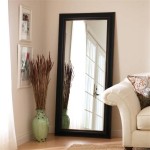How To Mirror Mobile Screen to PC Using USB Cable
Mirroring a mobile screen to a PC offers several advantages, from enjoying multimedia content on a larger display to facilitating presentations and demonstrations. While wireless mirroring methods exist, a USB connection provides a more stable and reliable experience, often with reduced latency. This article explores the methods to achieve this, covering both Android and iOS devices.
Android Screen Mirroring via USB
Android devices generally offer robust USB connectivity options. Several methods exist for mirroring the screen to a PC using a USB cable, leveraging built-in features and third-party applications.
Using Developer Options and Scrcpy: One of the most effective methods involves enabling USB debugging in the Developer Options. First, locate "Build Number" in the phone's settings (typically under "About Phone"). Tap "Build Number" repeatedly until Developer Options are enabled. Within Developer Options, activate "USB debugging." Next, download and install Scrcpy, an open-source command-line tool, on the PC. After connecting the phone via USB and granting necessary permissions on the device, Scrcpy can mirror the screen and even control the device from the PC.
Leveraging Manufacturer-Specific Software: Several Android manufacturers provide proprietary software suites designed for device management and interaction with a PC. These suites often include screen mirroring functionality. Examples include Samsung's Smart Switch, HTC Sync Manager, and LG PC Suite (for older devices). Users should check their manufacturer's website for available software and follow the provided instructions for screen mirroring.
Exploring Third-Party Applications: Numerous third-party applications facilitate screen mirroring over USB. Research and select a reputable application from a trusted source. These applications usually require installation on both the phone and the PC, along with enabling specific permissions on the device. Users should carefully review application permissions before installation.
Troubleshooting Android USB Mirroring Issues: If issues arise, ensure the USB cable is data-transfer capable, not just for charging. Verify the correct USB drivers are installed on the PC. Double-check the Developer Options settings and granted permissions on the Android device. Consulting online forums and communities dedicated to the specific phone model can also provide solutions to common problems.
iOS Screen Mirroring via USB
iOS devices, while traditionally relying on AirPlay for wireless mirroring, can also mirror their screens to a PC via USB, primarily using QuickTime Player.
Using QuickTime Player: This method requires a Mac computer. Connect the iOS device to the Mac using a USB cable. Open QuickTime Player. Under "File," select "New Movie Recording." Click the dropdown arrow next to the record button and choose the connected iOS device as the camera and microphone input. The device's screen will then be mirrored on the Mac.
Third-Party Applications for Windows: For Windows users, third-party applications are necessary for USB mirroring of iOS devices. Research and select a reputable application. These applications often require installation on both the PC and the iOS device, along with appropriate drivers. Ensure the chosen application is compatible with the specific iOS version running on the device.
Troubleshooting iOS USB Mirroring Issues: Common issues include outdated software (QuickTime Player or third-party applications) or incompatible iOS versions. Ensure both the PC and iOS device have the latest software updates. Check for driver updates specific to the iOS device on the PC. Refer to the application's support documentation or online forums for troubleshooting assistance.
General Considerations for USB Mirroring
Regardless of the operating system, several factors influence the performance and quality of USB screen mirroring:
USB Cable Quality: Using a high-quality, data-transfer capable USB cable is crucial for a stable connection. Faulty or charging-only cables may not support data transfer required for mirroring.
PC Specifications: The PC's processing power and graphics capabilities can impact the mirroring performance, particularly for high-resolution content or demanding applications running on the mobile device.
Software Updates: Keeping the operating system, device drivers, and mirroring software up-to-date is essential for optimal performance and compatibility.
USB Port Functionality: Verify the functionality of the USB ports on both the PC and mobile device. Try different ports if encountering connection issues.
By understanding the methods and considerations detailed above, users can effectively mirror their mobile screens to their PCs using a USB connection for a reliable and enhanced viewing experience.

Mobile Screen Mirror To Computer Usb Cable Phone

Best Ways To Mirror Android Pc Via Usb

How To Mirror Ios And Android Screens A Pc Via Usb Cable Airdroid Support Center

Best Ways To Mirror Android Pc Via Usb

How To Connect Mobile Laptop Via Usb Cable Mirror Your Android Screen

How To View Android Iphone Screen On Pc Via Usb Airdroid

How To Connect Mobile Laptop Via Usb Cable Mirror Your Android Screen

How To View Android Iphone Screen On Pc Via Usb Airdroid

Best Ways To Mirror Iphone Pc Via Usb Without Wifi

Best Ways To Screen Mirror Iphone Pc Via Usb Cable








